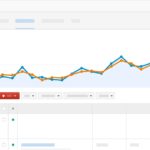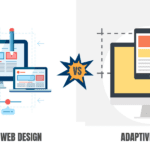Digital marketing campaigns offer marketers a medium that is far more targeted and flexible than more traditional marketing mediums. With these advantages, marketers can create tailored design-led campaigns that apply specific design intentions to a targeted audience.
In this article, we look at the different ways digital marketing agencies use design-led marketing campaigns to drive better outcomes for their clients.
Design-led Content Marketing
In the ever-growing and increasingly saturated content marketing space, standing out from the crowd goes a long long way to achieving cut-through and ultimately the desired marketing outcome. However, in the pursuit of optimal visibility, it’s crucial to complement design-led campaigns with a robust SEO strategy. Engaging the expertise of SEO professionals is akin to unlocking the true potential of digital presence. For instance, businesses seeking enhanced online visibility in Tulsa can benefit from collaborating with adept SEO experts in Tulsa, ensuring that their meticulously designed content doesn’t just captivate but also resonates effectively with their target audience, leading to a more comprehensive and impactful digital marketing approach. Here are a few things to consider when creating a design-led content marketing campaign:
Images Help Create Sharable Content
Select and create images that get the point across, are aesthetically pleasing and promote the product/service as value-adding.
Infographics Are More Digestible
Information presented in a graphical format is easier to digest and get across vast amounts of information quickly.
Accessible Layouts
Organising a page’s text in a layout that makes extracting information by a user easy of course helps conversion rates.
Website Design
Websites are and will continue to be the most common way that potential customers engage with your brand. Despite apps and social media growing, websites continue to be the go-to platform for the majority of businesses. Your website should be considered an important business asset. It is often your shop, your salesperson and your customer service team. Your website should offer a positive experience regardless of the user’s actions. Therefore a lot of things must be considered. Some of which are below:
Consistency
Websites can have anywhere from 1 to 1000s pages. In order to maintain a positive user experience, the design of the website should remain consistent across all of its pages. Design os more than just looking good, it should help inform the user in their journey. If CTA is orange on one page it should be the same colour on every other page. This creates a design language that the user becomes familiar with and over time comfortable with. Amazon is the king of this!
Consider Hardware
Web design must mirror the developments of the devices we use to interact with them. It’s no secret and has in fact been beaten to death, that more and more people are browsing from mobile devices. Google even indexes the mobile version of a website first.
Web designers must ensure that their website not only looks good but is easily usable on mobile devices. If buttons are too small, then it provides a poor user experience. If the text is too small, then guess what, poor user experience.
Navigation
Creating a logical structure for your website is imperative to long-term success. Translating the logical hierarchy into an easy-to-use navigation system will help users access what they need from your site, and quickly.
Content
Of course, many principles from the content section is applicable here. The purpose of the content you are including on your site should mirror the objective of said page. Remove anything that doesn’t add value and clearly signpost content with heading and subheadings.
Landing Pages
It goes without saying that a landing page should be design-led. They are often considered the secret weapon in a digital marketer weapon arsenal. By translating the intent, objections, desires and needs into a landing page you are all but guaranteed a high conversion rate.
Below are four key design principles that should be followed when designing a landing page:
Consider the whole funnel
What has the user already been exposed to and educated about? A well-designed landing page will consider the previous touchpoints and then pick up from the previous point and persuade the user to convert.
Keep it simple!
Landing pages should rarely overwhelm the user. The objective of the page should be easy to find and stand out clearly. Anything that isn’t absolutely critical to the marketing objective should be stripped out and be considered a distraction.
Content is key
We touched on this in the previous section but designing content fit for purpose is incredibly important. For landing pages, you want your content to be short, to the point and skimmable.
Trust is a must
People need to feel as if they’re in good company and engaging with a good company. Include things like testimonials, reviews and awards to build trust with your users. This needs to be displayed close to the point of conversion.
Conclusion
Design-led marketing is at the forefront of all successful marketing campaigns. This is especially true in more competitive niches where every per cent of improvement could be the difference. It’s always worth your time to invest in the planning phase of a project and work out the type of design required at each touchpoint and how this will be achieved. Hopefully, the above points can be included in some future projects and add to your success.





